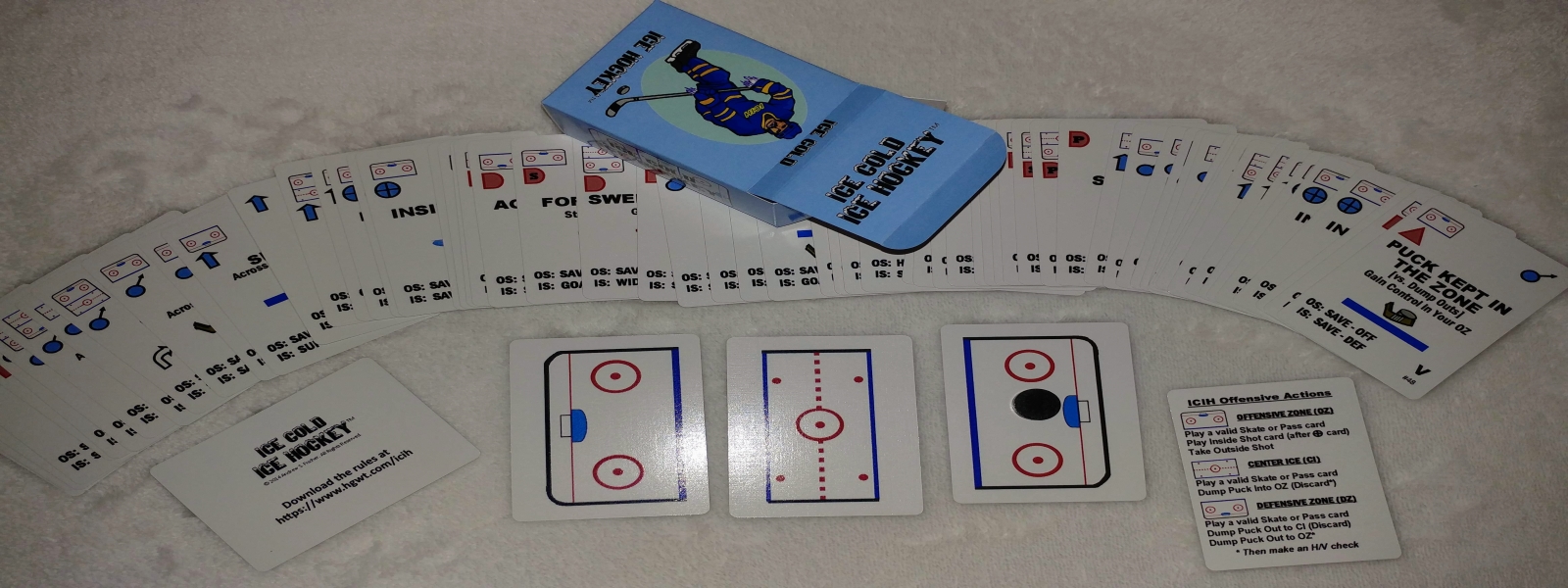Yes, ice hockey games are cold. The ice needs to stay frozen.
The arena is kept cool to maintain the ice. Ice hockey games are thrilling and fast-paced. But if you’ve never attended one, you might wonder about the temperature inside the arena. The cold environment is essential for the ice to remain hard and smooth.
Many fans enjoy the cool atmosphere as part of the experience. Wearing warm clothes and bundling up helps keep you comfortable. Whether you’re a seasoned fan or a first-timer, knowing what to expect can enhance your enjoyment. In this blog, we will explore why ice hockey games are cold and how to prepare for your visit. Get ready to dive into the chilly world of ice hockey!

Credit: rinkresult.com
Arena Temperature
Ice hockey arenas are known for their unique atmosphere. One of the key factors is the arena temperature. This aspect is crucial not only for the players but also for the spectators. Let’s delve into the specifics.
Ice Rink Conditions
The ice rink must be kept at a specific temperature. This ensures optimal ice quality. The typical temperature for the ice surface is around 24°F (-4°C). The air above the ice is usually kept between 50°F and 60°F (10°C to 15°C).
Maintaining these temperatures helps keep the ice firm and smooth. This is essential for fast-paced play. Any deviation can lead to ice becoming too soft or too hard. Both conditions can affect the game’s quality.
Spectator Comfort
Spectators often wonder about their comfort during a game. The air temperature in the stands is usually warmer than the ice. It is typically kept between 50°F and 60°F (10°C to 15°C).
While this is not freezing, it is chilly. Wearing warm clothes is advisable. Many arenas also offer blankets for rent or purchase. This can enhance the experience for those sensitive to cold.
Here is a quick reference:
| Area | Temperature (°F) | Temperature (°C) |
|---|---|---|
| Ice Surface | 24°F | -4°C |
| Air Above Ice | 50°F – 60°F | 10°C – 15°C |
| Spectator Stands | 50°F – 60°F | 10°C – 15°C |
With these temperatures in mind, spectators can plan accordingly. Dress warmly, bring a blanket, and enjoy the thrilling game!

Credit: www.cheltenhamsports.org
Player Experience
Ice hockey is a thrilling sport with fast-paced action and physical play. Players on the ice experience unique conditions that impact their performance. Let’s explore the key aspects of their experience, from the on-ice climate to the gear they use to stay warm.
On-ice Climate
The climate on the ice is cold. Rinks are kept between 24°F to 26°F. This temperature keeps the ice solid and smooth. Players quickly get used to the chill. The cold air helps them stay cool during intense play. It can be challenging at first but becomes second nature.
Gear And Warmth
Players wear specialized gear to stay warm. This gear includes:
- Thermal base layers
- Padded uniforms
- Insulated gloves
- Thick socks
Hockey gear is designed to protect and insulate. The layers trap body heat, keeping players warm. The equipment is also lightweight, so it does not hinder movement. Despite the cold, players stay focused and agile. The gear ensures they perform at their best.
In summary, the player experience in ice hockey is shaped by the cold climate and specialized gear. These elements work together, allowing players to thrive in the chilly conditions.
Impact On Gameplay
The temperature in an ice hockey arena greatly impacts gameplay. The cold environment affects both the puck and the players. Understanding these influences is key to appreciating the game.
Puck Performance
The puck is a vital element in ice hockey. Its performance changes with temperature. In colder conditions, the puck becomes harder. This affects its bounce and glide on the ice. Players must adjust their techniques accordingly. They need to account for the puck’s reduced friction on the cold surface.
Cold temperatures can also influence the puck’s trajectory. It may slide faster and more predictably. This can lead to quicker plays and more dynamic action. Teams must practice in cold conditions to master puck control. This ensures they are ready for game situations.
Player Mobility
Player mobility is another critical aspect affected by the cold. The ice surface is slicker when temperatures are low. This can enhance player speed and agility. Yet, it also demands better balance and control. Players must train intensively to adapt to these conditions.
Cold temperatures can also impact player stamina. The cold air can make breathing more challenging. Players might tire faster and require more frequent substitutions. Staying warm on the bench becomes essential. Players use heated benches and wear extra layers during breaks.
In summary, the cold environment of an ice hockey game influences both puck performance and player mobility. Teams must practice and prepare to excel under these unique conditions. This preparation helps them perform at their best during games.
Fan Preparedness
Attending an ice hockey game can be a thrilling experience. But many first-time attendees wonder, “Are ice hockey games cold?” The simple answer is yes. The temperature inside the arena is kept low to maintain the ice. Therefore, it’s important to be prepared. Below are some tips on what to wear and how to stay warm during the game.
What To Wear
Choosing the right attire is crucial for enjoying the game. Here are some recommendations:
- Layer Up: Wear multiple layers of clothing. It helps you adjust your comfort level easily.
- Warm Jacket: A thick, insulated jacket will keep you warm throughout the game.
- Comfortable Pants: Choose warm, comfortable pants. Jeans or thermal leggings work well.
- Hat and Gloves: A hat and gloves are essential. They keep your extremities warm.
- Warm Footwear: Opt for insulated boots or shoes. Pair them with thick socks.
Staying Warm
Besides wearing the right clothes, there are other ways to stay warm:
- Bring a Blanket: A small, portable blanket can be handy. You can drape it over your lap for extra warmth.
- Hand Warmers: Use hand warmers. They are small, inexpensive, and very effective.
- Stay Active: Clap and cheer for your team. Movement generates heat and keeps you warm.
- Warm Beverages: Drink hot chocolate or coffee. They help in warming you up from the inside.
- Arrive Early: Arriving early allows you to get used to the arena’s temperature.
| Item | Importance |
|---|---|
| Layered Clothing | High |
| Insulated Jacket | High |
| Hat and Gloves | Medium |
| Warm Footwear | High |
| Hand Warmers | Medium |
Behind The Scenes
Ever wondered what goes on behind the scenes at an ice hockey game? Maintaining the rink’s ice and controlling the temperature is crucial. Let’s dive into the fascinating world of ice maintenance and temperature control technology.
Ice Maintenance
The ice quality is essential for a smooth game. The crew prepares the ice before each match. They start by shaving the surface. This removes any rough patches. Next, they flood the ice with thin layers of water. This helps to create a smooth and even surface.
During the game, the ice can become damaged. Players’ skates leave grooves and divots. The crew uses a Zamboni machine to fix this. The Zamboni shaves the ice and adds a fresh layer of water. This ensures the ice stays in top condition throughout the game.
Temperature Control Technology
Keeping the rink at the right temperature is vital. The arena uses advanced technology to control the temperature. Sensors placed around the rink monitor the temperature constantly. These sensors feed data to a central system.
The system adjusts the cooling equipment as needed. This ensures the ice remains frozen and the air is comfortable for fans. The ideal ice temperature is around 24°F (-4°C). The air temperature in the arena is usually kept between 50°F and 60°F (10°C – 15°C).
Maintaining this balance is crucial. If the ice gets too warm, it becomes soft and slushy. If it gets too cold, it becomes brittle and can crack. The same goes for the air. It needs to be cool enough to keep the ice frozen but warm enough for the spectators to enjoy the game.

Credit: www.thegamecrafter.com
Frequently Asked Questions
Are Ice Hockey Arenas Cold?
Yes, ice hockey arenas are generally cold to keep the ice frozen.
What Should I Wear To An Ice Hockey Game?
Wear warm clothes like a jacket, hat, and gloves to stay comfortable.
How Cold Is It In An Ice Hockey Arena?
Temperatures in ice hockey arenas typically range from 50 to 60 degrees Fahrenheit.
Can I Bring A Blanket To An Ice Hockey Game?
Yes, bringing a blanket can help you stay warm during the game.
Do Ice Hockey Players Feel Cold During Games?
Ice hockey players usually don’t feel cold due to their physical activity and protective gear.
Are Indoor Ice Hockey Games Colder Than Outdoor Ones?
Indoor ice hockey games are controlled and usually warmer compared to outdoor games.
How Do Arenas Maintain The Ice Temperature?
Arenas use refrigeration systems to keep the ice at the right temperature.
Can Cold Temperatures Affect My Enjoyment Of The Game?
Being cold can be uncomfortable, so dress warmly to enjoy the game.
Is It Colder At The Ice Level In Hockey Arenas?
Yes, it is generally colder closer to the ice surface in hockey arenas.
Conclusion
Ice hockey games are indeed cold. Dress warmly to enjoy the experience. Layered clothing helps. Bring gloves and a hat. Don’t forget warm socks. Cold arenas add to the excitement. Stay comfortable and focus on the game. Enjoy the fast-paced action.
Ice hockey’s unique atmosphere is unforgettable. A little planning ensures a great time.




